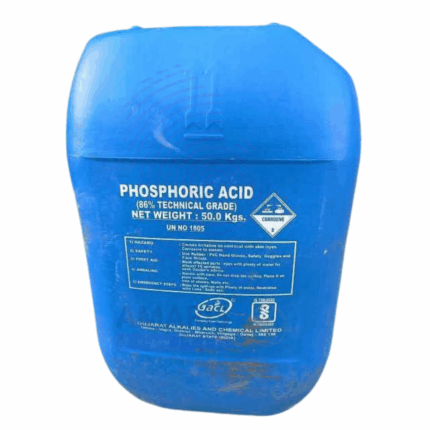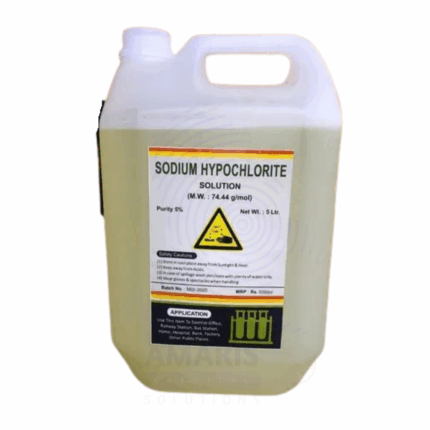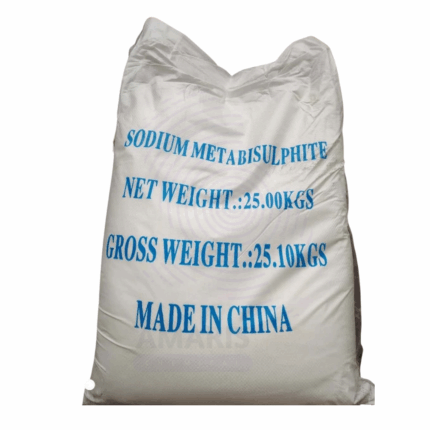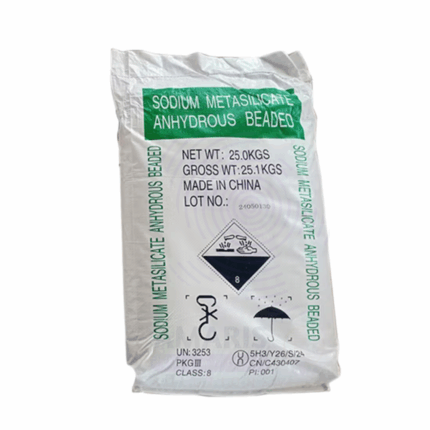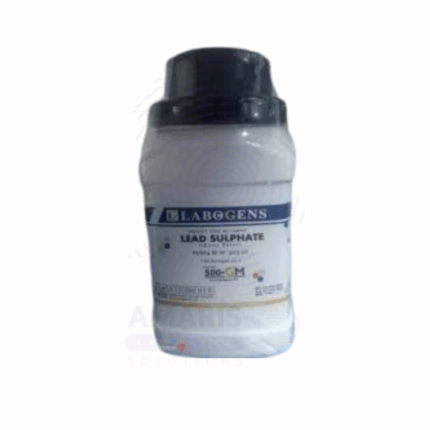
Tetrasodium EDTA
v
Tetrasodium EDTA is the tetrasodium salt of ethylenediaminetetraacetic acid, a powerful chelating agent widely used in industrial, personal care, and pharmaceutical applications. It effectively binds metal ions such as calcium and magnesium, preventing their interference in formulations. Its ability to enhance stability, improve efficacy, and prevent microbial growth makes it a multifunctional ingredient in a variety of chemical products.
Primary Uses
Personal Care & Cosmetics
Stabilizer: Prevents metallic ions from destabilizing products like shampoos, conditioners, lotions, and creams.
Preservative Enhancer: Improves effectiveness of preservatives by binding metal ions that can fuel microbial growth.
Cleansing Agent: Enhances performance of surfactants and helps remove metal residue from skin and hair.
Cleaning Products
Chelating Agent: Used in household and industrial cleaners to soften water and improve cleaning efficacy.
Scale Inhibitor: Prevents buildup of mineral deposits on surfaces in detergents and dishwashing liquids.
Pharmaceuticals
Formulation Stabilizer: Ensures stability of active ingredients by sequestering metal ions.
Parenteral and Ophthalmic Solutions: Maintains product integrity and prevents precipitation.
Secondary Uses
Water Treatment
Metal Sequestration: Removes heavy metals and hardness ions in water softening and wastewater treatment processes.
Textile & Paper Industry
Bleaching Stabilizer: Prevents catalytic degradation of peroxide-based bleaching agents by binding metal contaminants.
Agriculture
Micronutrient Carrier: Forms stable complexes with metal micronutrients in fertilizers and soil conditioners.
Photography & Film
Solution Stabilizer: Used in photographic processing to maintain chemical balance and image quality.
Basic Identification Attributes
Chemical Name (IUPAC): Tetrasodium ethylenediaminetetraacetate
Common/Trade Name: Tetrasodium EDTA
CAS Number: 64-02-8
HS Code: 2921.51.90
Synonyms: EDTA tetrasodium salt, Ethylenediaminetetraacetic acid tetrasodium salt
Physical & Chemical Properties
Physical State: White to off-white crystalline powder or granules
Color & Odor: Odorless; colorless to white
Melting Point: Decomposes before melting
Solubility: Freely soluble in water
pH (1% Solution): ~10–11
Density: Approx. 0.86 g/cm³
Safety & Hazard Attributes
GHS Classification: Eye irritant (Category 2); may cause mild skin irritation
Toxicity: Low toxicity in normal use; avoid prolonged contact or inhalation
Exposure Limits: No specific OSHA PEL; follow general good hygiene practices
Storage & Handling Attributes
Storage Conditions: Store in a cool, dry, well-ventilated area away from strong acids and oxidizing agents
Container Type: Bags or fiber drums with liners
Shelf Life: Typically 24 months in unopened packaging under proper conditions
Handling Precautions: Minimize dust generation; use appropriate PPE when handling bulk quantities
Regulatory & Compliance Attributes
Complies with REACH, GHS, and other international chemical safety standards
Listed in the U.S. TSCA Inventory and the EU Inventory of Cosmetic Ingredients
Approved for limited use in cosmetics and pharmaceuticals by regulatory bodies including FDA and EMA
Not classified as hazardous waste under most national regulations
Environmental & Health Impact
Biodegradability: Not readily biodegradable; persistent in aquatic environments
Ecotoxicity: May cause harm to aquatic life at high concentrations due to metal ion mobilization
Bioaccumulation: Not expected to bioaccumulate
PPE Required: Safety goggles, gloves, and dust mask recommended
Handling Guidelines: Use with proper ventilation; avoid ingestion and direct contact
Storage Measures: Keep containers tightly sealed and labeled properly
First Aid Measures
Inhalation: Move to fresh air; seek medical attention if symptoms persist
Skin Contact: Wash thoroughly with soap and water
Eye Contact: Rinse with water for at least 15 minutes; seek medical help if irritation continues
Ingestion: Rinse mouth; do not induce vomiting; seek medical attention if needed
Firefighting Measures
Fire Hazards: Non-flammable but may emit toxic fumes if involved in fire
Extinguishing Media: Use water spray, dry chemical, foam, or CO₂
Hazardous Combustion Products: Carbon oxides, nitrogen oxides, and sodium oxides


 Preservatives(food)
Preservatives(food) Flavor Enhancers
Flavor Enhancers Acidulants
Acidulants Sweeteners
Sweeteners Antioxidants
Antioxidants Colorants(food)
Colorants(food) Nutraceutical Ingredients (food)
Nutraceutical Ingredients (food) Nutrient Supplements
Nutrient Supplements Emulsifiers
Emulsifiers
 Collectors
Collectors Dust Suppressants
Dust Suppressants Explosives and Blasting Agents
Explosives and Blasting Agents Flocculants and Coagulants
Flocculants and Coagulants Frothers
Frothers Leaching Agents
Leaching Agents pH Modifiers
pH Modifiers Precious Metal Extraction Agents
Precious Metal Extraction Agents
 Antioxidants(plastic)
Antioxidants(plastic) Colorants (Pigments, Dyes)
Colorants (Pigments, Dyes) Fillers and Reinforcements
Fillers and Reinforcements Flame Retardants
Flame Retardants Monomers
Monomers Plasticizers
Plasticizers Polymerization Initiators
Polymerization Initiators Stabilizers (UV, Heat)
Stabilizers (UV, Heat)
 Antifoaming Agents
Antifoaming Agents Chelating Agents
Chelating Agents Coagulants and Flocculants
Coagulants and Flocculants Corrosion Inhibitors
Corrosion Inhibitors Disinfectants and Biocides
Disinfectants and Biocides Oxidizing Agents
Oxidizing Agents pH Adjusters
pH Adjusters Scale Inhibitors( water)
Scale Inhibitors( water)
 Antioxidants(cosmetic)
Antioxidants(cosmetic) Emollients
Emollients Fragrances and Essential Oils
Fragrances and Essential Oils Humectants
Humectants Preservatives
Preservatives Surfactants(cosmetic)
Surfactants(cosmetic) Thickeners
Thickeners UV Filters
UV Filters
 Fertilizers
Fertilizers Soil Conditioners
Soil Conditioners Plant Growth Regulators
Plant Growth Regulators Animal Feed Additives
Animal Feed Additives Biostimulants
Biostimulants Pesticides (Herbicides, Insecticides, Fungicides)
Pesticides (Herbicides, Insecticides, Fungicides)
 Active Pharmaceutical Ingredients (APIs)
Active Pharmaceutical Ingredients (APIs) Excipients
Excipients Solvents(pharmaceutical)
Solvents(pharmaceutical) Antibiotics
Antibiotics Antiseptics and Disinfectants
Antiseptics and Disinfectants Vaccine Adjuvants
Vaccine Adjuvants Nutraceutical Ingredients (pharmaceutical)
Nutraceutical Ingredients (pharmaceutical) Analgesics & Antipyretics
Analgesics & Antipyretics
 Analytical Reagents
Analytical Reagents Solvents(lab)
Solvents(lab) Chromatography Chemicals
Chromatography Chemicals Spectroscopy Reagents
Spectroscopy Reagents microbiology-and-cell-culture-reagents
microbiology-and-cell-culture-reagents Molecular Biology Reagents
Molecular Biology Reagents Biochemical Reagents
Biochemical Reagents Inorganic and Organic Standards
Inorganic and Organic Standards Laboratory Safety Chemicals
Laboratory Safety Chemicals Specialty Laboratory Chemicals(Special Laboratory Equipment)
Specialty Laboratory Chemicals(Special Laboratory Equipment)
 Demulsifiers
Demulsifiers Hydraulic Fracturing Fluids
Hydraulic Fracturing Fluids Scale Inhibitors(oil)
Scale Inhibitors(oil) Surfactants(oil)
Surfactants(oil) Drilling Fluids
Drilling Fluids
 Dyes and Pigments
Dyes and Pigments Bleaching Agents
Bleaching Agents Softening Agents
Softening Agents Finishing Agents
Finishing Agents Antistatic Agents
Antistatic Agents
 Admixtures
Admixtures Waterproofing Agents
Waterproofing Agents Sealants and Adhesives
Sealants and Adhesives Curing Compounds
Curing Compounds Concrete Repair Chemicals
Concrete Repair Chemicals Anti-Corrosion Coatings
Anti-Corrosion Coatings
 Surfactants(cleaning)
Surfactants(cleaning) Builders
Builders Enzymes
Enzymes Solvents (Cleaning)
Solvents (Cleaning) Fragrances
Fragrances
 Electronic Chemicals
Electronic Chemicals Catalysts
Catalysts Lubricants
Lubricants Photographic Chemicals
Photographic Chemicals Refrigerants
Refrigerants Automotive chemicals
Automotive chemicals Pyrotechnic Chemicals
Pyrotechnic Chemicals
 Biodegradable Surfactants
Biodegradable Surfactants Bio-based Solvents
Bio-based Solvents Renewable Polymers
Renewable Polymers Carbon Capture Chemicals
Carbon Capture Chemicals Wastewater Treatment Chemicals
Wastewater Treatment Chemicals
 Pigments
Pigments Solvents(paint)
Solvents(paint) Specialty Coatings
Specialty Coatings Binders/Resins
Binders/Resins Additives
Additives Driers
Driers Anti-Corrosion Agents
Anti-Corrosion Agents Functional Coatings
Functional Coatings Application-Specific Coatings
Application-Specific Coatings
 Fresh Herbs
Fresh Herbs Ground Spices
Ground Spices Whole Spices
Whole Spices Spice Blends
Spice Blends Dried Herbs
Dried Herbs
 Leavening Agents
Leavening Agents Dough Conditioners
Dough Conditioners Flour Treatments
Flour Treatments Fat Replacers
Fat Replacers Decoratives
Decoratives Preservatives(baking)
Preservatives(baking)
 Plasticizers & Softeners
Plasticizers & Softeners Reinforcing Agents
Reinforcing Agents Adhesion Promoters
Adhesion Promoters Vulcanizing Agents
Vulcanizing Agents Antidegradants
Antidegradants Blowing Agents
Blowing Agents Fillers & Extenders
Fillers & Extenders Accelerators & Retarders
Accelerators & Retarders







